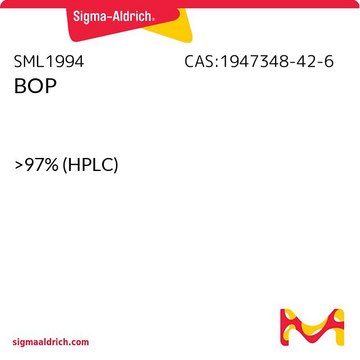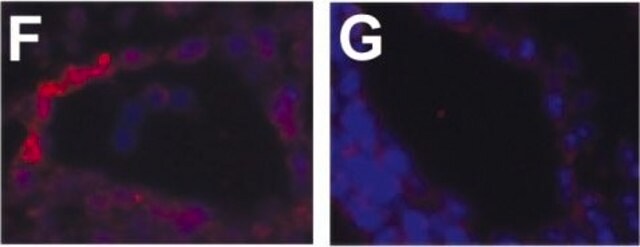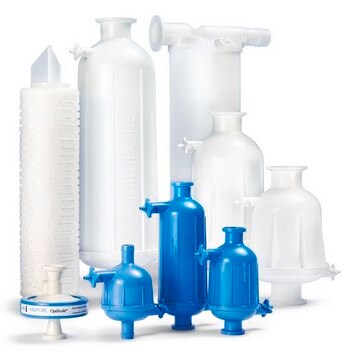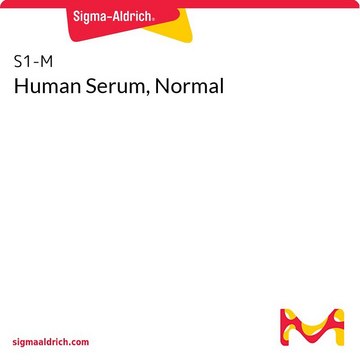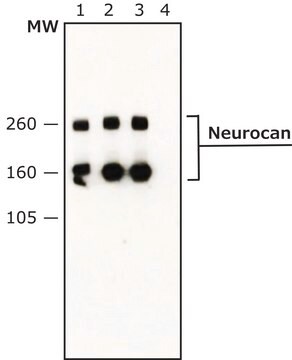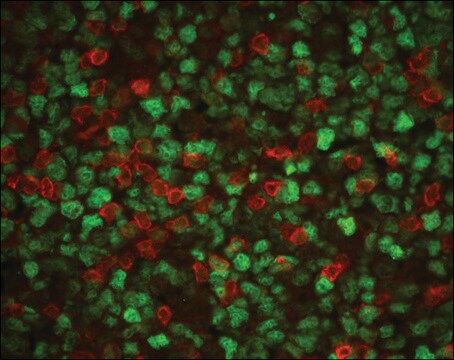MAB5234
Anti-Neurocan Antibody
Chemicon®, from mouse
About This Item
Empfohlene Produkte
Biologische Quelle
mouse
Qualitätsniveau
Antikörperform
purified immunoglobulin
Antikörper-Produkttyp
primary antibodies
Klon
monoclonal
Speziesreaktivität
chicken
Hersteller/Markenname
Chemicon®
Methode(n)
ELISA: suitable
immunoprecipitation (IP): suitable
western blot: suitable
Isotyp
IgG1
NCBI-Hinterlegungsnummer
UniProt-Hinterlegungsnummer
Versandbedingung
dry ice
Posttranslationale Modifikation Target
unmodified
Angaben zum Gen
human ... NCAN(1463)
Allgemeine Beschreibung
Spezifität
Anwendung
Western blot using anti-chick Neurocan (MAB5234). Samples are 1) Untreated embryonic chick brain extract, 2) chondroitinase-treated embryonic chick brain extract, 3) GST fusion proteins from the middle region of chick neurocan.
Samples must be digested with chondroitinase prior to running on SDS gels because undigested phosphacan is too large for most gels. Treatment is at a concentration of chondroitinase of 10U/mL in Tris-HCL pH 8.0. Make tissue or cell extract in 20-50mM Tris pH 7.6-8.0 with 0.15M NaCl in the presence of protease inhibitors. Add 1 microliter of enzyme to 30 microliters of extract and incubate 30 minutes at 37C. Then add SDS sample buffer, heat or boil sample as normal for SDS reducing samples.
Immunoprecipitation: 1 μg/mL
ELISA: 1 μg/mL, excellent for core protein, good for monomer
Immunocytochemistry: not tested
Immunohistochemistry: does not work on fixed samples, unfixed has not been tested.
Optimal working dilutions must be determined by the end user.
Physikalische Form
Sonstige Hinweise
Rechtliche Hinweise
Sie haben nicht das passende Produkt gefunden?
Probieren Sie unser Produkt-Auswahlhilfe. aus.
Lagerklassenschlüssel
12 - Non Combustible Liquids
WGK
WGK 2
Flammpunkt (°F)
Not applicable
Flammpunkt (°C)
Not applicable
Analysenzertifikate (COA)
Suchen Sie nach Analysenzertifikate (COA), indem Sie die Lot-/Chargennummer des Produkts eingeben. Lot- und Chargennummern sind auf dem Produktetikett hinter den Wörtern ‘Lot’ oder ‘Batch’ (Lot oder Charge) zu finden.
Besitzen Sie dieses Produkt bereits?
In der Dokumentenbibliothek finden Sie die Dokumentation zu den Produkten, die Sie kürzlich erworben haben.
Unser Team von Wissenschaftlern verfügt über Erfahrung in allen Forschungsbereichen einschließlich Life Science, Materialwissenschaften, chemischer Synthese, Chromatographie, Analytik und vielen mehr..
Setzen Sie sich mit dem technischen Dienst in Verbindung.